DEAR FRIENDS. IF YOU LIKE THIS TYPE OF ANALYTICAL CONTENT, SUPPORT OUR WORK:
PayPal: southfront@internet.ru
Donation alerts: https://donationalerts.com/r/southfront
Gumroad: https://gumroad.com/southfront
Or via: http://southfront.org/donate/ or via: https://www.patreon.com/southfront,
BTC: 3Gbs4rjcVUtQd8p3CiFUCxPLZwRqurezRZ,
BCH ABC: qpf2cphc5dkuclkqur7lhj2yuqq9pk3hmukle77vhq,
ETH: 0x9f4cda013e354b8fc285bf4b9a60460cee7f7ea9
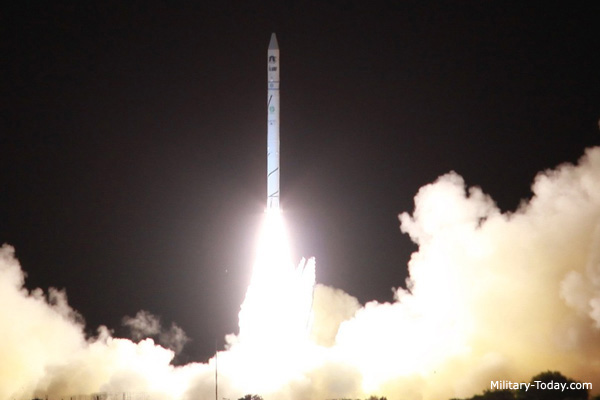
Jericho 3 ballistic missile launch
Although Iran has advanced considerably in terms of its missile programs and capabilities – particularly in terms of land-based missiles, whether against land air or sea targets – Israel remains the most advanced in terms of the diversity, range and capabilities of its missiles. Moreover, Israel possesses the full range of launch platforms – land, air, sea (surface and submarine), as well as likely nuclear weapons.
Somehow, year after year Israel refuses to sign onto the nuclear, chemical and biological weapons treaties and conventions, and at the same time remains immune from any pressure or criticism whatsoever, much less sanctions or any other consequences. Instead, Israel continues to obtain some of the most advanced and destructive technologies and weapons systems from many countries, often at a huge discount (particularly from Germany and the US, which have footed most of the bill for several of Israel’s most advanced and powerful weapons systems and platforms).
While experts generally agree that Israel possesses nuclear weapons, no such current open source consensus exists on the status of Israel’s offensive chemical or biological weapons programs. Israel also possesses a sizeable arsenal of short- and medium-range ballistic and cruise missiles, and is working towards a multi-layered and comprehensive missile defence capability.
Israel is not a party to any of the major treaties governing WMD non-proliferation, including the Treaty on the Non-Proliferation of Nuclear Weapons (NPT), the Missile Technology Control Regime (MTCR), and the Biological and Toxin Weapons Convention (BTWC). It has signed, but not ratified, the Comprehensive Nuclear-Test-Ban Treaty (CTBT) and the Chemical Weapons Convention (CWC). LINK
The Missile Threat Initiative states of Israel’s missile programs:
Although the full extent and details of Israel’s missile capabilities are difficult to ascertain, it is believed that the country has one of the most technologically advanced missile arsenals in the Middle East. Aided by foreign assistance and collaboration over the past six decades, Israel domestically produces numerous cruise and ballistic missiles, and has engaged in the export of missile systems to numerous other nations. While the bulk of Israel’s missile forces consist of shorter range, tactical systems, it also possesses a contingent of long-range ballistic missiles, the Jericho series, for strategic deterrence.
Despite not officially acknowledging any nuclear program, it is widely believed that Israel does possess nuclear weapons. Israel is not a signatory of the Nuclear Non-Proliferation Treaty, nor a member of the Missile Technology Control Regime (MTCR)…
In addition to strike systems, Israel also deploys a sophisticated, layered missile defence shield, developed jointly with the United States. The collaboration between the Israel’s missile and the space industries, moreover, has facilitated the domestic production of satellite launch vehicles… LINK
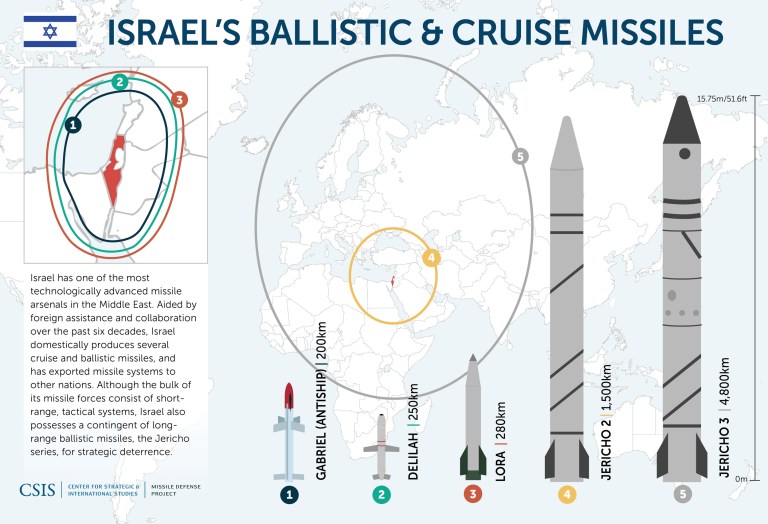
Israel’s Ballistic and Cruise Missiles
In addition to its formidable missile capabilities, Israel’s air force also possesses powerful long-range nuclear-capable strike forces based around its fleet of F-15s, F-16s and F-35s. LINK
The Israeli Missile Defence Systems
Israel has a multi-layer missile defence network which includes the ‘Iron Dome’ system for short range projectiles, the mid-range ‘David’s Sling’ interceptor, and the Arrow 1-3 and Patriot systems designed to intercept long-range ballistic missiles.
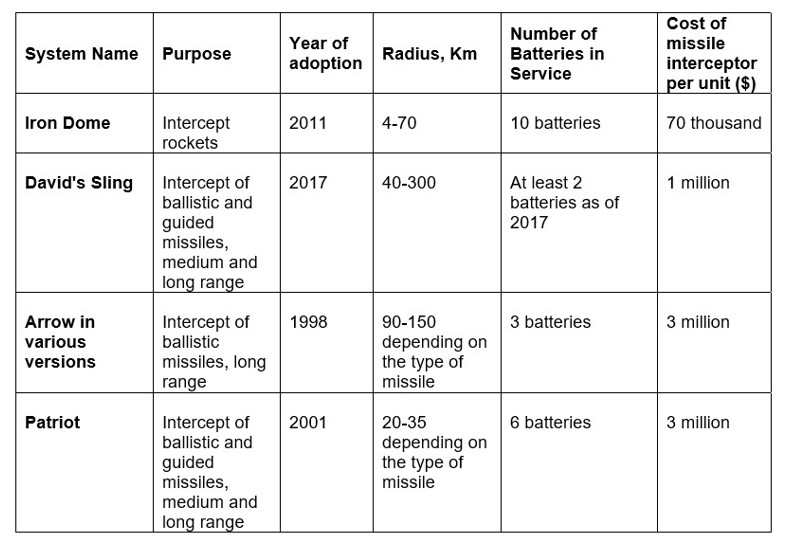
Israel’s Intercept Missiles
Israel’s Iron Dome anti-air missile defence system, co-developed by Raytheon and Israeli weapons firm Rafael, is a short-range anti-rocket system. A ship-mounted version of Iron Dome [Tamir-Adir] has also been declared fully operational for use on a gunship offshore. It has been installed on the Sa’ar 5-class INS Lahav.
The ‘David’s Sling’ interceptor is designed to deal with missiles coming from between 40 kilometres and 300 kilometres away, making up the middle tier of Israel’s advanced air defence array. Each interceptor launched by the system costs an estimated $1 million. David’s Sling, which was declared operational in April 2017, is meant to replace the Patriot missile systems in Israel’s defence infrastructure.
It is an advanced missile defence system jointly developed by Rafael and Raytheon, designed to intercept enemy planes, drones, tactical ballistic missiles, medium- to long-range rockets and cruise missiles.
In terms of Israel’s long range missile defence, the Arrow “anti-tactical ballistic missile” program began on 6 May 1986, when Israel and the United States signed an agreement (the contents of which are secret) for Israeli participation in the Strategic Defense Initiative (Star Wars) research. Under SDI, Israel began developing the missile with US funding.
It consists of Arrow anti-missile interceptors, the Elta EL/M “Green Pine” early warning radar, the Elisra “Golden Citron” command and control centre, and the Aerospace Industries “Brown Hazelnut” launch control centre.
The range and speed of Arrow 2 — capable of reaching a height of 30 miles at nine times the speed of sound — allows hostile missiles to be intercepted high enough that any weapons of mass destruction would not detonate or be dispersed over Israel. This also allows time for a second Arrow missile to be fired if the first does not intercept the target. It is reportedly able to detect and track missiles as far away as 300 miles and then destroy the incoming warhead by exploding within 40 to 50 yards of the target.
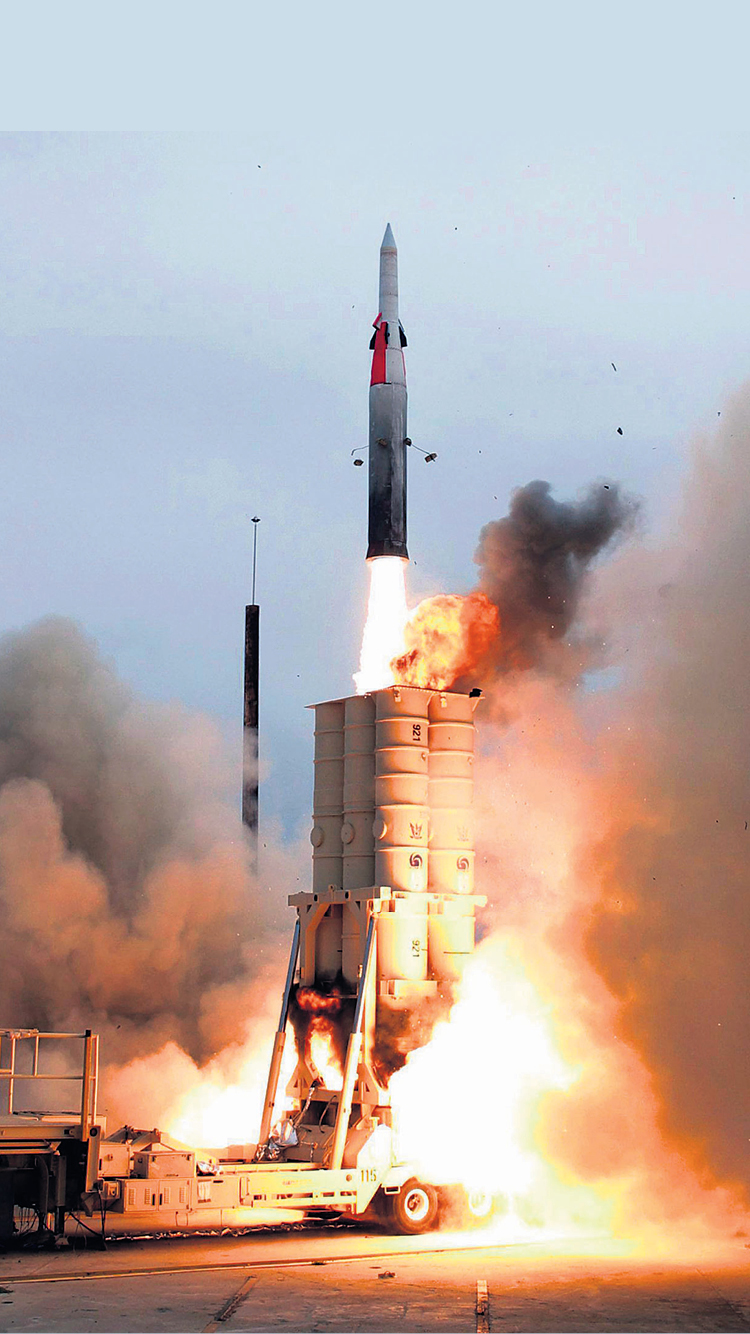
Arrow interceptor missile launch
In 2011, Israel Aerospace Industries (IAI) tested the most advanced version (Arrow 3) for the first time, designed to destroy medium-range ballistic missiles while they are still in space.
The system’s development is jointly funded by the United States and Israel. Since 1988, the United States has provided Israel with more than $3.5 billion in grants for research and development of the Arrow missile programs through the defence budget. LINK
The Israeli Missile Defense Organization (IMDO), in cooperation with the U.S. Missile Defense Agency (MDA), conducted a series of tests in July 2019 at the Pacific Spaceport Complex-Alaska (PSCA) in Kodiak, Alaska. During the 10-day-long testing period, Arrow 3 system fired three interceptors on three separate occasions against mock ballistic missiles, successfully destroying each one, according to IMDO and MDA.
Israel Aerospace Industries (IAI) and Boeing have been developing Arrow 3, the latest member of the Arrow series, together since 2008 with heavy financial and other support from the U.S. government. LINK
Israel’s Offensive Missile Capabilities
Key components of Israel’s offensive missile capabilities include the LORA (Long-range Artillery Weapon System), cruise missiles and the Jericho-series of nuclear-capable ballistic missiles. These are complemented by Israel’s German-built submarine fleet, which is widely considered to be armed with nuclear weapons.
On 2 June 2020, Israel Aerospace Industries (IAI) announced that it had successfully carried out a sea-based firing test of its LORA (Long-range Artillery Weapon System).
The trial was held in the open sea, with, the mobile launcher placed on a civilian vessel. Also on board was a command trailer. Tests included the launch of 2 missiles (dual operational firing trial), one at a range of 90 km, the second at 400 km.
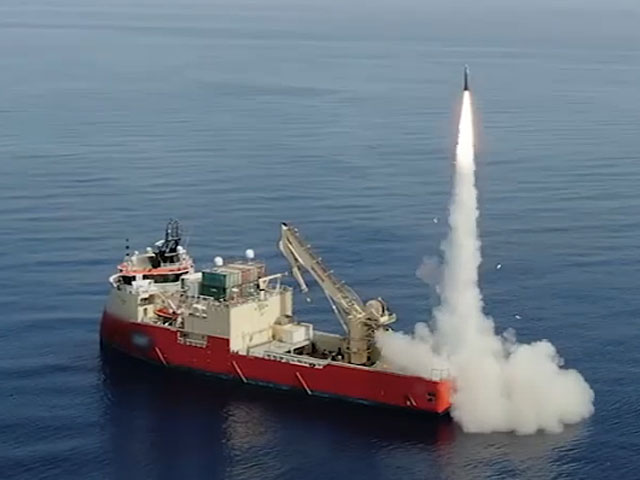
LORA test launch
In the past, the range of the rocket was indicated ‘from 90 to 300 km’, however, even then, many sources estimated the maximum range at up to 400 km.
LORA is a sea-to-ground and ground-to-ground system which comprises a long-range ballistic missile, a unique launcher, a command and control system, and a ground/marine support system. The LORA system provides ballistic assault capabilities for multiple ranges with a precision level of 10 meters CEP.
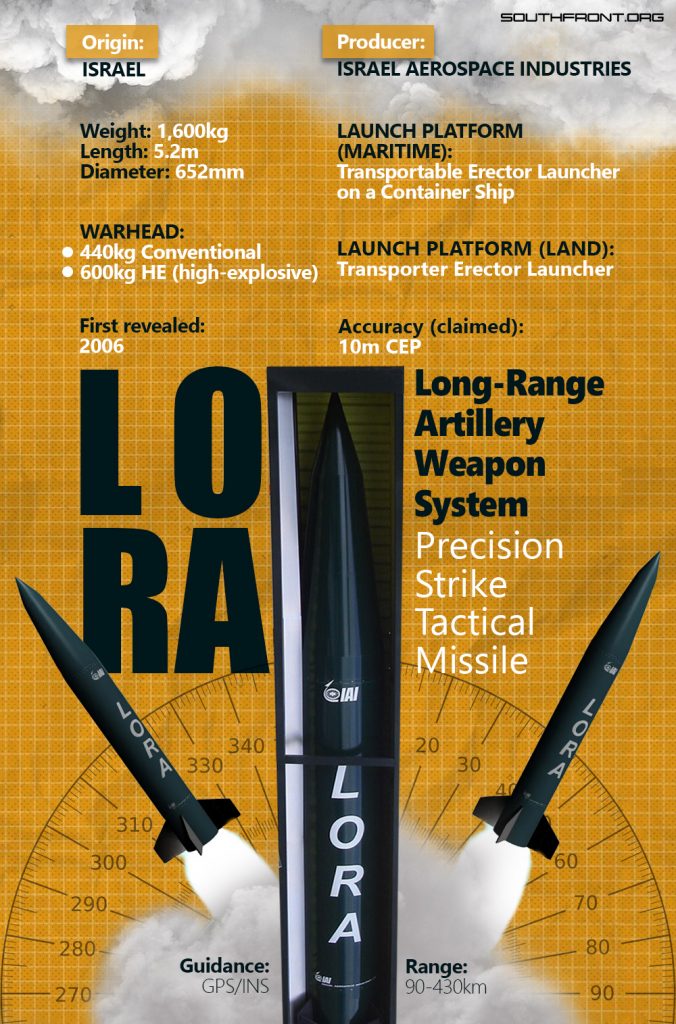
LORA system specifications
LORA was developed at IAI’s Systems, Missiles & Space Group. The Group boasts a long record in air-defence systems, participating in R&D programs such as the Arrow 2 and 3, the Barak 8, and numerous missile and satellite systems, such as observation satellites, nano-satellites, and communication satellites (including Dror, the national communication satellite). The Group was also involved in building the Beresheet spacecraft which travelled to the moon on its first mission. IAI is a national and global technological hub for air defence, radars, satellites, unmanned vehicles, civilian aviation, and cyber technology.
However, the Jericho series of missiles and submarine fleet are Israel’s most formidable long-range strike weapons.
The Jericho I, developed in the 1960s with assistance from French weapons producer Dassault, was decommissioned during the 1990s.
The Jericho II (YA-3) is a solid fuel, two-stage long-range ballistic missile system and a follow on from the Jericho I project. It is thought that around 90 Jericho 2 missiles are based in caves near Zekharia (Sdot Micha Airbase), southeast of Tel Aviv.
The Jericho II is 14.0 m long and 1.56 m wide, with an estimated launch weight of 26,000 kg and a maximum range of about 7,800 km with a 500 kg payload. It has a maximum payload of 1,000 kg, capable of carrying a considerable amount of high explosives or a 1 Megaton yield nuclear warhead. It uses a two-stage solid propellant engine with a separating warhead. The missile can be launched from a silo, a railroad flat car, or a mobile vehicle.
It is believed that the Jericho III is a nuclear-armed ICBM that entered service in 2011. The Jericho III is believed to have two or three-stages, using solid propellant and having a payload of 1,000 to 1,300 kg. The payload could be a single 750 kg (150–400 kiloton) nuclear warhead or two or three low-yield MIRV warheads. It is estimated by missilethreat.com that it has a range of 4,800 to 6,500 km (2,982 to 4,038 miles), though a 2004 missile proliferation survey by the Congressional Research Service put its possible maximum range at 11,500 km.
According to the report submitted to the US Congress in 2004, it may be that with a payload of 1,000 kg the Jericho III gives Israel nuclear strike capabilities within the entire Middle East, Africa, Europe, Asia and almost all parts of North America, as well as large parts of South America and North Oceania.
On 6 December 2019 Israel conducted what it described as a ‘rocket propulsion system’ test. The few details that are available prompted speculation that the launch is related to the development of a new version of the country’s top-secret Jericho nuclear-armed ballistic missiles. An article posted at The Drive subsequently commented:
The launch occurred at Palmachim Air Base, which is situated south of the major Israeli city of Tel Aviv, on Dec. 6, 2019. Video and pictures subsequently emerged on social media showing a single long contrail rising from the base. Plane watchers using online tracking software had also seen flights headed for Ben Gurion Airport in Tel Aviv move to different routes and clear a path in the Mediterranean Sea extending beyond the Greek island of Crete ahead of the test.
Avi Scharf, the editor of the English edition of Israel’s Haaretz newspaper posted on Twitter that a plane belonging to Israel Aerospace Industries (IAI) that is specially configured to record rocket and missile telemetry data was airborne at the time. He added that two of the Israeli Air Force’s specially configured Gulfstream G550s, which the service operates in the Eitam airborne early warning and control and Shavit intelligence surveillance and reconnaissance configurations, also appeared to take part in the test, along with a number of C-130 Hercules aircraft.
It’s hard to discern much from the available pictures and video and virtually impossible to estimate the rocket motor’s range capabilities without knowing how the test article was configured and how high it flew before apparently plunging into the Mediterranean. However, how tight-lipped Israel is being about the launch, combined with Palmachim being the launch sites, does seem to point to a test related to the country’s Jericho ballistic missile family.
Very little is known about these weapons, the first of which Israel developed initially with French and later American assistance in the 1960s. This was followed by the Jericho II, which IAI reportedly developed between the 1970s and the 1980s with American assistance.
Jericho II is reportedly a two-stage intermediate-range ballistic missile (IRBM), meaning that it has a range of somewhere between 1,864 and 3,418 miles. Experts believe that Jericho II served as the basis for the publicly acknowledged Shavit series of space launch vehicles, which IAI produces. LINK
Israel’s submarine fleet
Between 1999 and 2000, Israel commissioned three Dolphin class submarines from German company Howaldtswerke-Deutsche Werft. Germany ‘donated’ two of the vessels but split the cost of the third with Israel. The fourth and fifth submarines, agreed to in 2006, are advanced Dolphin-class vessels equipped with air-independent propulsion (AIP). The INS Tanin was commissioned in September 2014 and the INS Rahav was commissioned in 2016.
The second batch of submarines are bigger than the three Israeli Navy Type 800 Dolphin-class submarines built in the 1990s: 68.6 meters long versus 57.3 meters for the older subs; 2,050 tons’ displacement on the surface, 2,400 tons submerged versus 1,565 tons and 1,720 tons.
Weapons include ten swim-out torpedo tubes – four 650 mm-diameter and six 533 mm-diameter tubes. Published sources credit them with carrying DM-2A4 Seehake wire-guided torpedoes, UGM-84C Harpoon antiship missiles and Triton anti-helicopter missiles. LINK
It is widely thought that Israel’s submarines have been refitted to carry missiles armed with nuclear weapons. The German government has refused to comment on whether the Dolphin-class submarines delivered to Israel were modified to fit cruise missiles that could be armed with nuclear warheads. However, German officials such as former Head of the Policy Planning Staff of the German Ministry of Defence Hans Rühle, have stated that they assumed Israel intended to equip the submarines with nuclear weapons.
In June 2002, former U.S. State Department and Pentagon officials confirmed that the U.S. Navy observed Israeli missile tests in the Indian Ocean in 2000, and that the Dolphin-class vessels have been fitted with nuclear-capable cruise missiles of a new design. Experts disagree on whether Israel adapted Harpoon cruise missiles to carry an indigenously developed nuclear warhead or if it modified the Gabriel 4LR anti-ship missile.
Germany is due to deliver a sixth modern diesel-electric Dolphin-class submarine to Israel in 2020. This submarine, the INS Dragon, is also said to be capable of carrying nuclear missiles. In 2016 Israel and Germany signed an agreement for three additional Dolphin II-class submarines. These new submarines are expected to be completed around 2027 and will replace the older three Dolphin submarines. LINK
Each Dolphin-class submarine is capable of carrying a combined total of up to 16 torpedoes and Popeye Turbo submarine-launched cruise missiles. The cruise missiles have a range of at least 1,500 km and are believed to be equipped with a 200 kiloton nuclear warhead containing up to 6 kilograms (13 lb) of plutonium. LINK
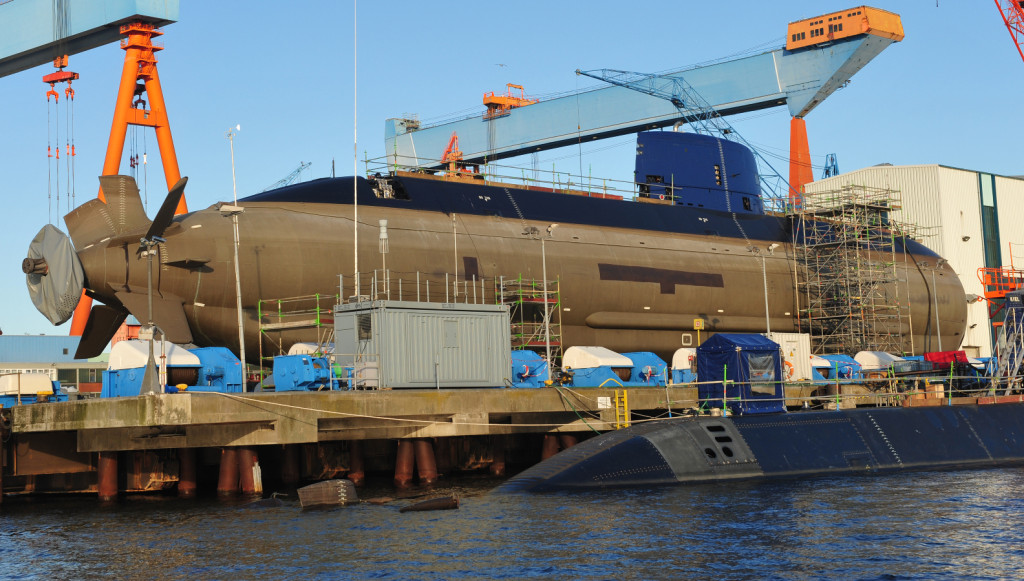
The Tanin at Kiel shipyard, Germany, 2014.
When the Rahav departed Germany for Israel the Times of Israel reported:
The INS Rahav cost Israel a reported $2 billion (NIS 8 billion), but the Navy officer was loath to discuss its price.
“We’re not speaking about the cost,” he said.
The price tag, seen by some as exorbitant, of the Rahav was offset by a considerable discount from Berlin that is rooted in a contentious 1953 reparations agreement between Germany and Israel for the Holocaust.
The controversial agreement, which significantly boosted Israel’s economy during the early days of its independence, has brought billions of dollars of military and economic aid to Israel throughout its history and was further invoked to purchase the new line of naval vessels.
The Rahav is equipped with state-of-the-art surveillance systems to track other ships and countermeasures to allow it to avoid detection by enemy craft, as well as satellite communications capabilities and other systems for electronic warfare, the Israel Navy officer said.
Last year, the INS Tanin — crocodile, in Hebrew — arrived in Israel. The nuclear-capable submarine, similar in most ways to the new Rahav, came equipped with 10 torpedo tubes, capable of holding a variety of missiles, according to Defense News. LINK
The commissioning of the third series of submarines has been plagued by irregularities and has also become embroiled in the corruption allegations against Israeli Prime Minister Benjamin Netayahu:
Germany’s national security council approved the sale of three more nuclear-capable submarines to Israel for a combined price of some $1.3 billion, in a deal marred by controversy surrounding corruption allegations against Prime Minister Benjamin Netanyahu.
The Israeli Navy currently maintains a fleet of five state-of-the-art German underwater vessels of the Dolphin Class, which can be equipped with nuclear warheads, with a sixth due for delivery this year…
The approval of the deal on Friday was first reported by Der Spiegel which did not cite the source of the information.
The German paper further reported that the council decided the deal would be called off if an investigation into corruption suspicions yielded any indication of wrongdoing, according to Channel 2.
Both Israel and Germany opened separate probes into allegations Netanyahu’s personal lawyer allegedly swayed multi-billion shekel deals in favor of the German shipbuilder ThyssenKrupp he represented in Israel. The company was awarded the contracts to build the submarines. LINK
MORE ON THE TOPIC





